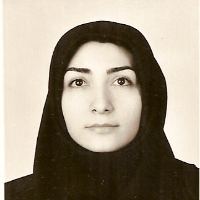Effect of diagenetic processes on the distribution of reservoir and non-reservoir units in the Asmari Formation, Ahvaz Oilfield (Wells No, X, Y, Z)
The Asmari Formation in southwest Iran is the youngest and most important hydrocarbon reservoir in Iran. Asmari Formation in Ahvaz oil field in the studied wells consists of limestone, dolomite, dolomitic limestone, sandy dolomite and sandstone, siltstone and shale. Asmari formation in Ahvaz oil field is divided into ten zones in terms of stratigraphic characteristics (Mc Coard, 1974). Diagenetic process along with sedimentary processes are considered as one of the main processes controlling reservoir quality in carbonate reservoirs of the world (Schlager, 2005; Ahr, 2008). In some cases, similar facies are subjected to similar diagenesis processes and have similar reservoir quality and produce similar rock types, but most of the time due to the high impact of diagenetic processes the porosity-permeability distribution in these reservoirs is completely reversed (Gomes et al, 2008). Therefore, it is necessary to carry out detailed diagenesis studies and investigate the effects of diagenesis on reservoir changes and evolutions in all systematic and fundamental studies of carbonate reservoirs and hybrid reservoirs (Lucia, 2007; Ahr, 2008).
This study was conducted on wells No. X, Y and Z of Ahvaz oil field. In this study, 1100 thin sections of the drilling cores of the mentioned wells were studied. The types of facies and their governing diagenesis processes have been identified using microscopic thin-section studies of drill cores. Types of microfacies were named based on Dunham's method (Dunham, 1962). Wilson's classification (Wilson, 1975) and Buxton and Pedley (Buxton and Pedley, 1989) were also used to determine the sedimentary environment of microfacies. In order to distinguish limestone from dolomite, all thin sections were stained with alizarin red solution according to Dickson's method (1965). From digital well and porosity data (resulting from helium gas core testing) and core permeability (resulting from mercury saturation core testing) in order to distribute different units (reservoir and non-reservoir) in the studied wells and drawing the two-dimensional model of their distribution using Geolog, Excel software was used. In this discussion, firstly, the most important diagenesis processes affecting the reservoir changes and evolutions of the Asmari formation in Ahvaz oil field are discussed, and then the distribution of different reservoir and non-reservoir units in wells No Z, Y, X of this field was studied using flow hydraulic units in any rock type. Finally, the control of diagenesis processes on the distribution of these units in different parts of this formation has been discussed.
Most of the diagenesis processes of the Asmari Formation in the studied field (especially the types affecting the reservoir quality) have occurred under conditions where the diagenesis environment was affected by the sedimentary environment. Dissolution and dolomitization, which have been widely occurring in the studied facies, have played the greatest role in increasing the reservoir quality. These two processes, the development of which depended on the sedimentary environment, are the most important diagenetic processes controlling the reservoir quality. Dolomitization in the Asmari reservoir is very early and late diagenetic processes that and has had a dual effect (constructive and destructive) on the reservoir quality of the Asmari Formation, raising the reservoir quality in the limestone and in the Sandstones are in the form of cement and have lowered the quality of the reservoir. Although the carbonate cement appears to fill the voids in the rocks and reduce their porosity, it has a positive effect on the reservoir quality due to the fact that it occurs continuously immediately after deposition and prevents compaction in the facies. Anhydrite cement is the most important diagenetic process with a negative impact on reservoir quality. The expansion of coarse-grained clastic facies are the best reservoir-prone facies, and the diagenesis processes of these facies have been mainly affected by their sedimentary environment. Based on this, environmental conditions can be mentioned as the main factor controlling the reservoir quality. In the studied field, the higher the lateral expansion and thickness of the sandstone facies, the better its reservoir quality. The contribution of environmental conditions in controlling the reservoir quality of carbonate facies is less than that of clastic and mixed facies, but due to the early diagenesis of most of the diagenesis processes in these facies, the superior role of environmental conditions in controlling the reservoir quality is evident.
In the survey, eight hydraulic flow units were identified, the best of which are the 7th and 8th hydraulic flow units. These hydraulic flow units correspond to the rock type of loose sand. The worst hydraulic flow units 1 and 2, which corresponds to the dolomudstone rock type.
- حق عضویت دریافتی صرف حمایت از نشریات عضو و نگهداری، تکمیل و توسعه مگیران میشود.
- پرداخت حق اشتراک و دانلود مقالات اجازه بازنشر آن در سایر رسانههای چاپی و دیجیتال را به کاربر نمیدهد.



